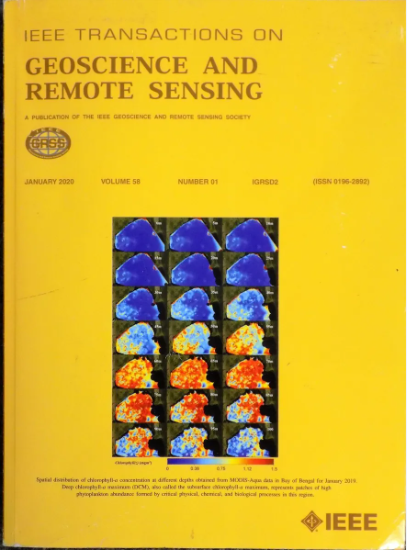利用全局引导归一化和局部亲和性蒸馏技术进行高分辨率遥感图像分割
IF 7.5
1区 地球科学
Q1 ENGINEERING, ELECTRICAL & ELECTRONIC
IEEE Transactions on Geoscience and Remote Sensing
Pub Date : 2024-11-04
DOI:10.1109/TGRS.2024.3482688
引用次数: 0
摘要
近年来,高分辨率(HR)遥感图像(RSIs)分割受到越来越多的关注。由于像素数量巨大,语义分割算法受到 GPU 存储能力的限制,因此目前处理高分辨率遥感图像的方法主要分为两大类,即全局方法和局部方法。前者对原始图像进行低采样,会丢失大量特征细节。后者对原始图像进行裁剪,无法获得全局上下文信息。这两种方法都会导致有限的分割精度。在本文中,我们提出了一个端到端的框架,称为全局注入网络(GINet),它从特征分布和特征关系两个层面进行探索,以实现全局上下文和局部细节之间的权衡。具体来说,我们提出了全局引导规范化(GGN)模块,该模块将全局上下文信息注入局部分支,并利用全局特征对局部特征进行调节,以增强局部分支的全局感知。此外,为了约束两个分支的空间一致性,我们受知识蒸馏技术的启发,提出了局部亲和蒸馏(LAD)损失,将局部特征中的关系蒸馏到全局特征中,以保持两个分支中的斑块对应关系的相似性。在DeepGlobe(2448美元/次 2448美元)、Inria Aerial(5000美元/次 5000美元)和GID-15(7200美元/次 6800美元)三个大规模土地覆盖分类数据集上的综合实验结果证实了我们的方法在人力资源语义分割任务中的有效性和优越性。本文章由计算机程序翻译,如有差异,请以英文原文为准。
High-Resolution Remote Sensing Image Segmentation With Global-Guided Normalization and Local Affinity Distillation
In recent years, high-resolution (HR) remote sensing images (RSIs) segmentation has received growing attention. The huge number of pixels poses a challenge to the semantic segmentation algorithm, which is limited by the storage of GPUs, so the current methods for processing HR RSIs are categorized into two main categories, i.e., global methods and local methods. The former downsamples the original image and loses a lot of feature details. The latter crops the original image and fails to obtain global contextual information. Both types of methods lead to limited segmentation accuracy. In this article, we propose an end-to-end framework, called global injection network (GINet), which explores two levels of feature distribution and feature relationship to achieve tradeoff between global context and local details. In concrete terms, we propose the global-guided normalization (GGN) module, which injects global context information into local branch and modulates local features using global features to enhance the global perception of local branch. In addition, to constrain the spatial consistency of two branches, inspired by the knowledge distillation technique, we propose local affinity distillation (LAD) loss, which distills the relations in local features into global features to keep the similarity of the relationships corresponding to patches in the two branches. The comprehensive experimental results on three large-scale land-cover classification datasets, DeepGlobe (
$2448 \times 2448$
), Inria Aerial (
$5000 \times 5000$
), and GID-15 (
$7200 \times 6800$
), confirm the effectiveness and superiority of our method in HR semantic segmentation tasks.
求助全文
通过发布文献求助,成功后即可免费获取论文全文。
去求助
来源期刊

IEEE Transactions on Geoscience and Remote Sensing
工程技术-地球化学与地球物理
CiteScore
11.50
自引率
28.00%
发文量
1912
审稿时长
4.0 months
期刊介绍:
IEEE Transactions on Geoscience and Remote Sensing (TGRS) is a monthly publication that focuses on the theory, concepts, and techniques of science and engineering as applied to sensing the land, oceans, atmosphere, and space; and the processing, interpretation, and dissemination of this information.
 求助内容:
求助内容: 应助结果提醒方式:
应助结果提醒方式:


